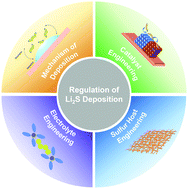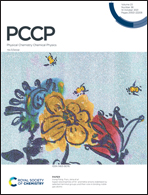High-performance lithium–sulfur batteries enabled by regulating Li2S deposition
Abstract
Lithium–sulfur batteries (LSBs) have received intensive attention in recent years due to their high theoretical energy density derived from the lithiation of sulfur. In the discharge process, sulfur transforms into lithium polysulfides (LiPSs) that dissolve in liquid electrolytes and then into insoluble Li2S precipitated on the electrode surface. The electronically and ionically insulating Li2S leads to two critical issues, including the sluggish reaction kinetics from LiPSs to Li2S and the passivation of the electrode. In this regard, controlling the Li2S deposition is significant for improving the performance of LSBs. In this perspective, we have summarized the recent achievements in regulating the Li2S deposition to enhance the performance of LSBs, including the solution-mediated growth of Li2S, sulfur host enhanced nucleation and catalysis induced kinetic improvement. Moreover, the challenges and possibilities for future research studies are discussed, highlighting the significance of regulating the Li2S deposition to realize the high electrochemical performance and promote the practical uses of LSBs.

- This article is part of the themed collections: 2021 PCCP HOT Articles and PCCP Perspectives


 Please wait while we load your content...
Please wait while we load your content...